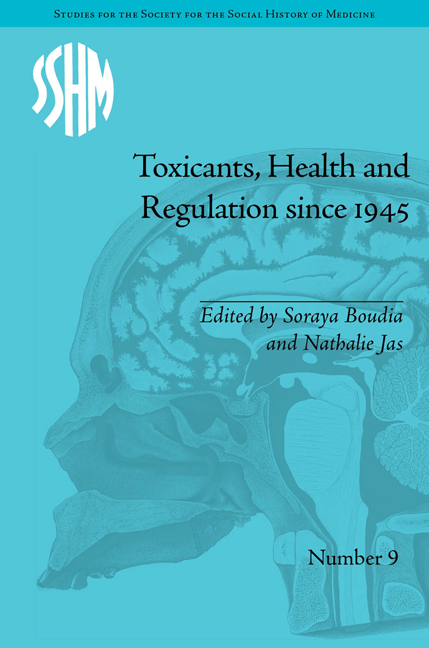Refine search
Actions for selected content:
10306 results in History of science: general interest
2 - Fieldwork and Excursion Culture
-
- Book:
- Natural History Societies and Civic Culture in Victorian Scotland
- Published by:
- Pickering & Chatto
- Published online:
- 05 December 2014, pp 45-66
-
- Chapter
- Export citation
6 - The Derby Arboretum
-
- Book:
- The British Arboretum
- Published by:
- Pickering & Chatto
- Published online:
- 05 December 2014, pp 135-154
-
- Chapter
- Export citation
3 - The Afterlife of Freak Shows
- from Part I - Science and Spectacle
-
-
- Book:
- Popular Exhibitions, Science and Showmanship, 1840–1910
- Published by:
- Pickering & Chatto
- Published online:
- 05 December 2014, pp 61-78
-
- Chapter
- Export citation
Dedication
-
- Book:
- Until Darwin, Science, Human Variety and the Origins of Race
- Published by:
- Pickering & Chatto
- Published online:
- 05 December 2014, pp x-x
-
- Chapter
- Export citation
Introduction
-
- Book:
- The British Arboretum
- Published by:
- Pickering & Chatto
- Published online:
- 05 December 2014, pp 1-10
-
- Chapter
- Export citation
6 - Narrativizing ‘The World's Show’: The Great Exhibition, Panoramic Views and Print Supplements
- from Part II - Word and Image
-
-
- Book:
- Popular Exhibitions, Science and Showmanship, 1840–1910
- Published by:
- Pickering & Chatto
- Published online:
- 05 December 2014, pp 115-132
-
- Chapter
- Export citation
Index
-
- Book:
- The Transit of Venus Enterprise in Victorian Britain
- Published by:
- Pickering & Chatto
- Published online:
- 05 December 2014, pp 213-220
-
- Chapter
- Export citation

Toxicants, Health and Regulation since 1945
-
- Published by:
- Pickering & Chatto
- Published online:
- 05 December 2014
-
- Book
- Export citation
Index
-
- Book:
- Communicating Physics
- Published by:
- Pickering & Chatto
- Published online:
- 05 December 2014, pp 297-302
-
- Chapter
- Export citation
2 - Postpositivism and the History of Science
-
- Book:
- The Historiography of the Chemical Revolution
- Published by:
- Pickering & Chatto
- Published online:
- 05 December 2014, pp 53-88
-
- Chapter
- Export citation
Part IV - The Politics of Display
-
- Book:
- Popular Exhibitions, Science and Showmanship, 1840–1910
- Published by:
- Pickering & Chatto
- Published online:
- 05 December 2014, pp -
-
- Chapter
- Export citation

Vision, Science and Literature, 1870–1920
- Ocular Horizons
-
- Published by:
- Pickering & Chatto
- Published online:
- 05 December 2014
-
- Book
- Export citation
List of Illustrations
-
- Book:
- Science and Eccentricity
- Published by:
- Pickering & Chatto
- Published online:
- 05 December 2014, pp ix-x
-
- Chapter
- Export citation
Dedication
-
- Book:
- Domesticating Electricity
- Published by:
- Pickering & Chatto
- Published online:
- 05 December 2014, pp vi-vi
-
- Chapter
- Export citation
Acknowledgements
-
- Book:
- Until Darwin, Science, Human Variety and the Origins of Race
- Published by:
- Pickering & Chatto
- Published online:
- 05 December 2014, pp vii-viii
-
- Chapter
- Export citation
Conclusion
-
- Book:
- Communicating Physics
- Published by:
- Pickering & Chatto
- Published online:
- 05 December 2014, pp 213-218
-
- Chapter
- Export citation
Dedication
-
- Book:
- The Transit of Venus Enterprise in Victorian Britain
- Published by:
- Pickering & Chatto
- Published online:
- 05 December 2014, pp x-x
-
- Chapter
- Export citation
Conclusion
-
- Book:
- Recreating Newton
- Published by:
- Pickering & Chatto
- Published online:
- 05 December 2014, pp 187-194
-
- Chapter
- Export citation
2 - The Uncertain Identity of Electricity
-
- Book:
- Domesticating Electricity
- Published by:
- Pickering & Chatto
- Published online:
- 05 December 2014, pp 37-60
-
- Chapter
- Export citation
9 - Tyndall and Stokes: Correspondence, Referee Reports and the Physical Sciences in Victorian Britain
- from Part III - Communicating Science
-
-
- Book:
- The Age of Scientific Naturalism
- Published by:
- Pickering & Chatto
- Published online:
- 05 December 2014, pp 171-186
-
- Chapter
- Export citation
